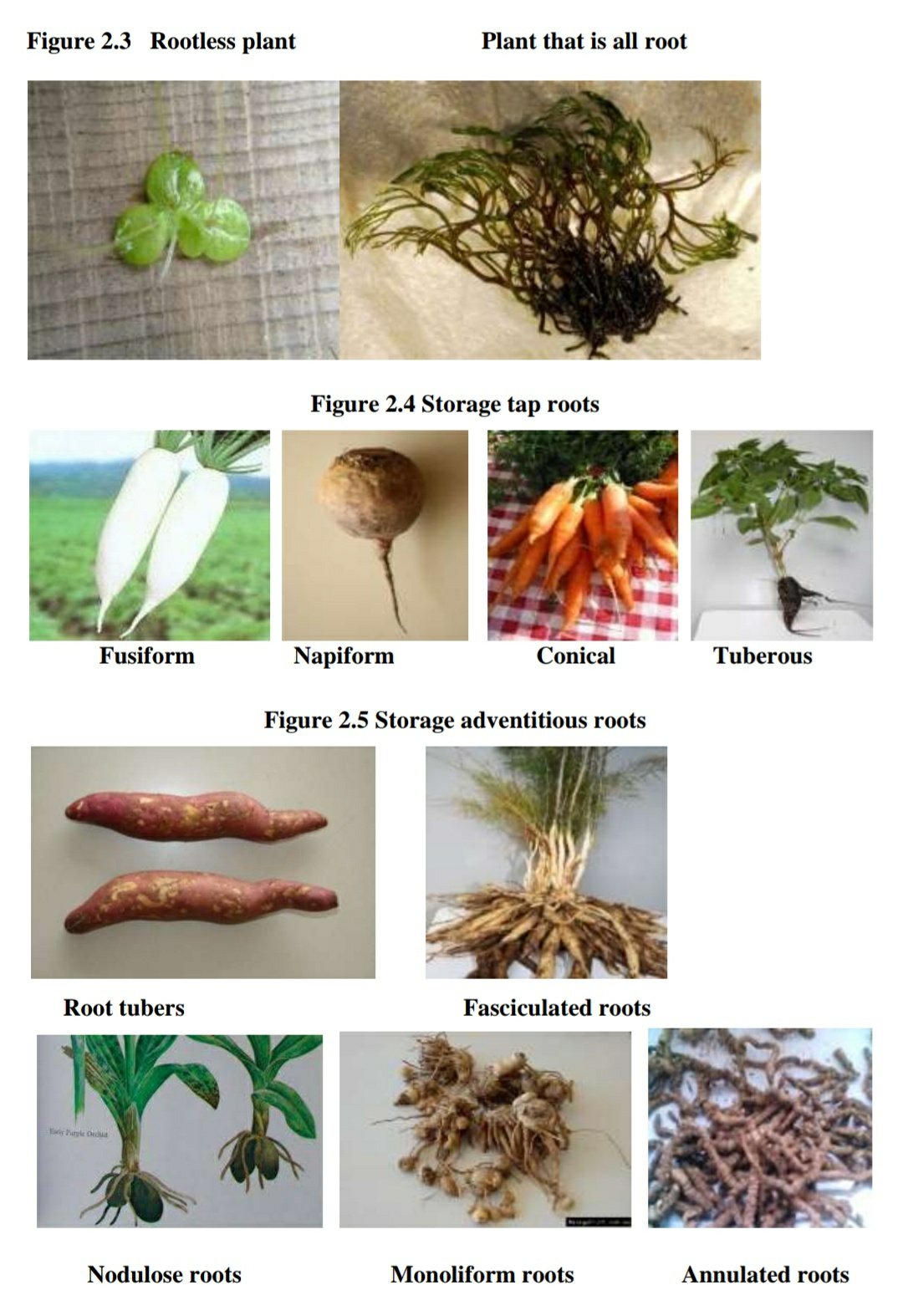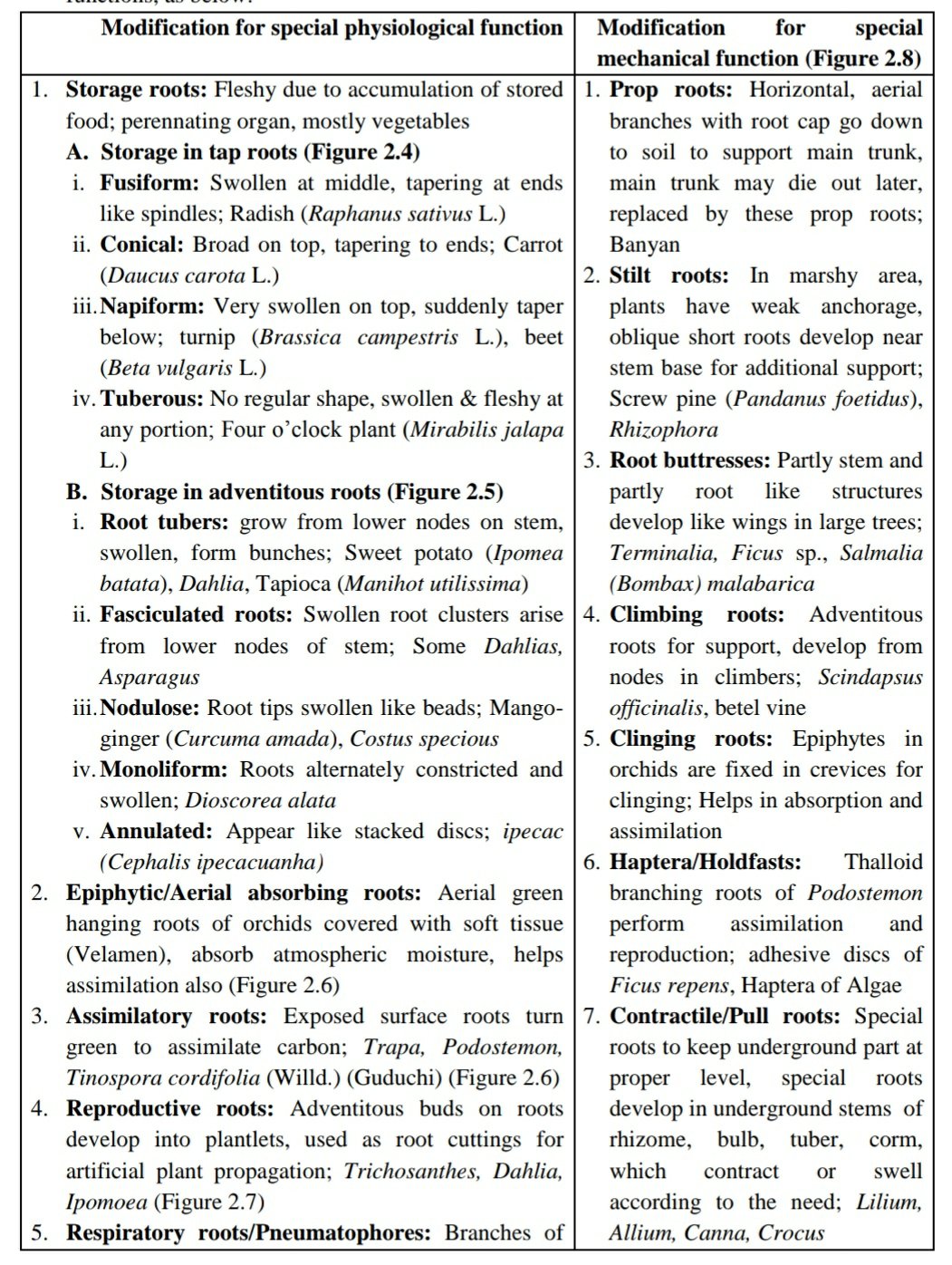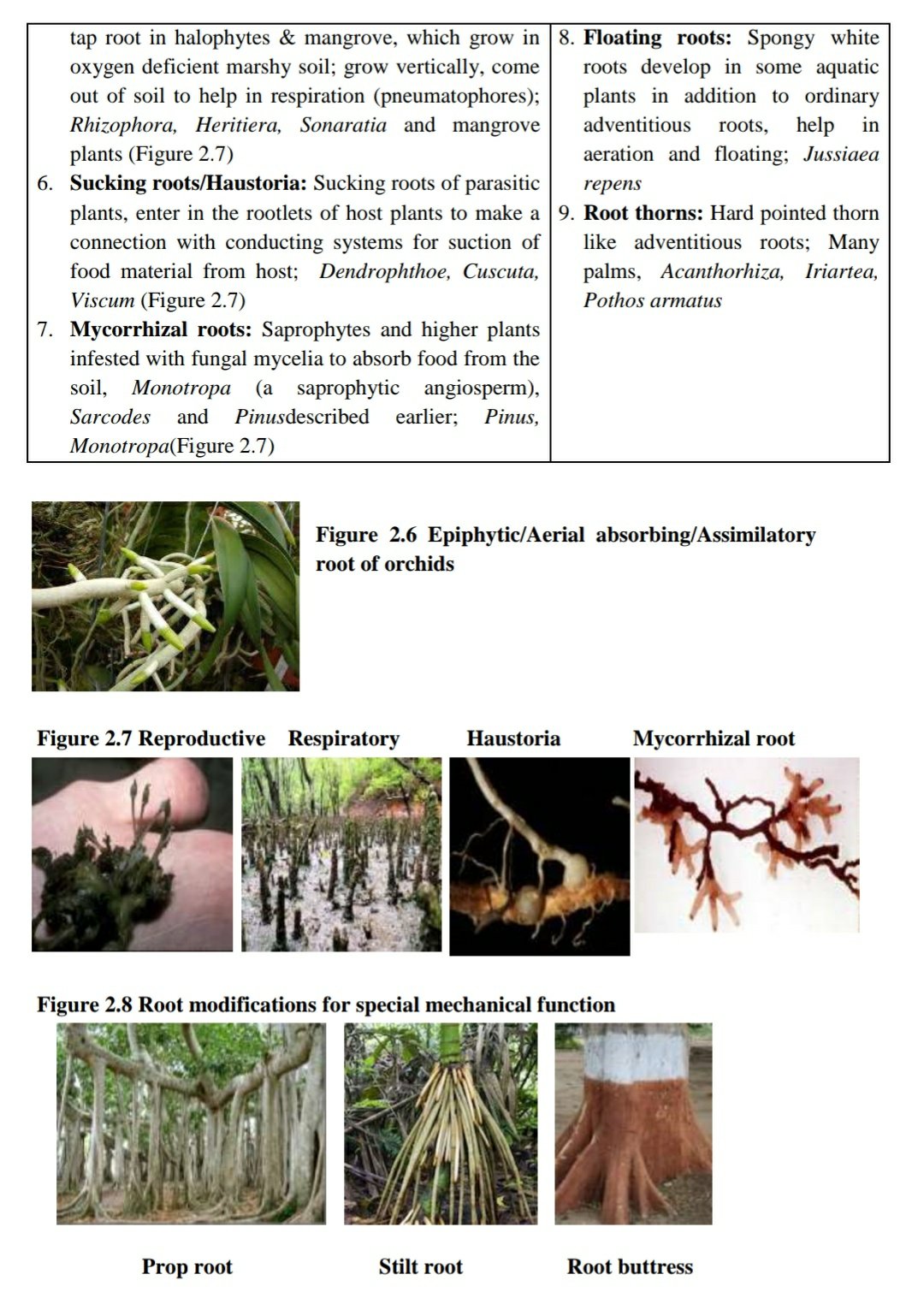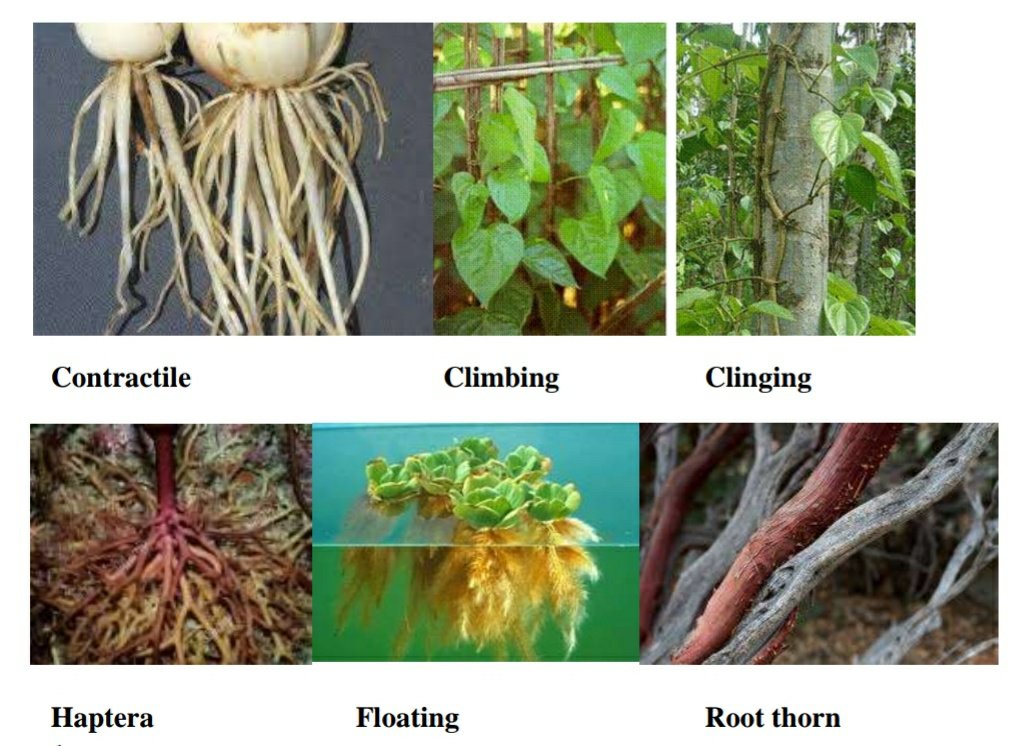Exercise: 2
Study of Root and Its Modifications
Root: It is descending organ of plant and is prolongation of radicle of embryo.
It is generally non green with no buds
It has no nodes and internodes
It is positively geotropic and hydrotropic and negatively phototropic
Lateral roots develop from internal tissues i.e. endogenous in origin
Root bears unicellular root-hairs for absorption
Function:
Primary
Physiological – Absorption, Conduction
Mechanical – Fixation & anchorage to the soil
Special
Physiological – Storage, Respiration, Photosynthesis (rarely)
Mechanical – Additional support
Rootless plants: Some aquatic plants like, Urticularia, Wolffia, have feebly developed roots or no roots at all; Lemna, Epipogium (Figure 2.3)
Plants with all roots: Main plant body is a root; Podostemon, Monotropa(Figure 2.3)
Types of root systems
Two major kinds of roots have been recognized on the basis of origin:
Normal root system: Roots system develop as the direct prologation of radicle; roots of sunflower
Adventitous root system: Roots develop from any position other than radicle; root of orchids
On the basis of nature, ther are two major root types (Figure 2.1):
1. Primary/Tap root system: Radicle forms the main root (tap root), gives rise to primary branches and branches of higher order, ramify deep into soil; most dicot roots
2. Fibrous root system: After a meager growth of tap root, new primary roots grow from seeds, near radicle base, called seminal roots; some roots develop from lower nodes of plumule, called adventitious roots; this system is not as strong as tap root system; most monocot roots
3. Modified roots: Some roots are modified to carry out specialized mechanical and physiological functions
Regions/Zones of roots (Common for tap roots and fibrous roots): Four morphologically distinct regions are observed (Figure 2.2)
1. Root cap region: A cap like structure (calyptra) at root tip; protects root tip
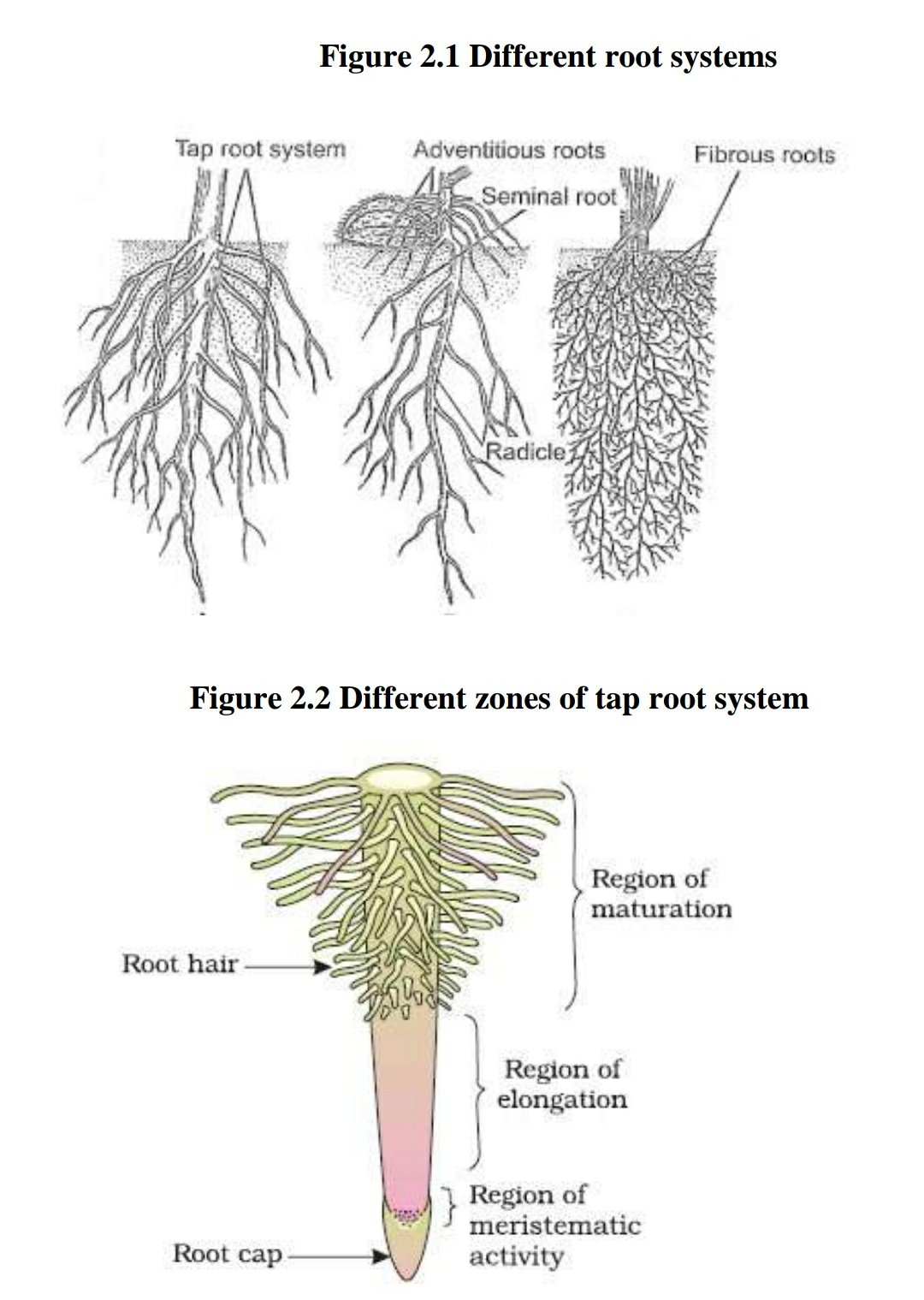
2. Meristematic/Growing region: Region of division and elongation, just behind the root cap
3. Root hair/Piliferous/Maturation region: Above to growing region, root surface covered with fine unicellular hairs doing absorption; aquatic plants do not have root hairs, they absorb through all of their surface
4. Permanent region: Most of the root and old branches are accommodated in permanent region, no growth, no absorption, only conduction is carried out renewed time to time, multiple root caps may be present (Pandanus); Root pockets are seen at root apex in Lemna
Modified Roots: Some roots are modified for different mechanical and physiological functions, as below:
Questions
1. Define the following terms:
i. Root ii. Root cap iii. Root hairs iv. Tap root v. Fibrous roots
vi. Adventitious roots vii. Normal roots viii. Sucking roots
2. Differentiate the followings:
1. i. Tap roots and fibrous roots ii. Prop roots and stilt roots
3. Explain the types of root system with suitable diagram.
4. Enlist the characteristics and functions of root.
5. Enlist the various modifications of root with their functions and appropriate
examples.

